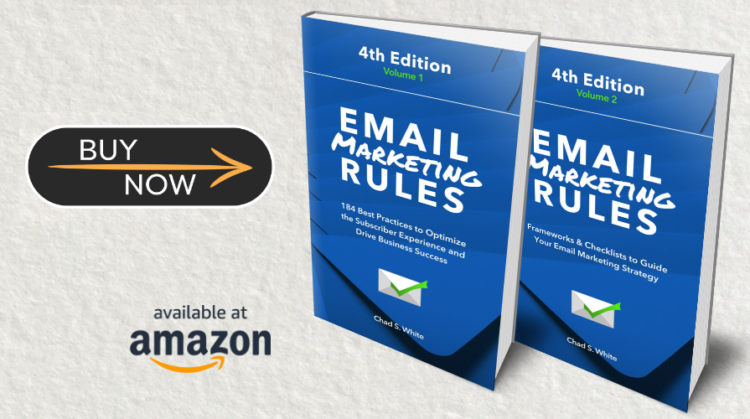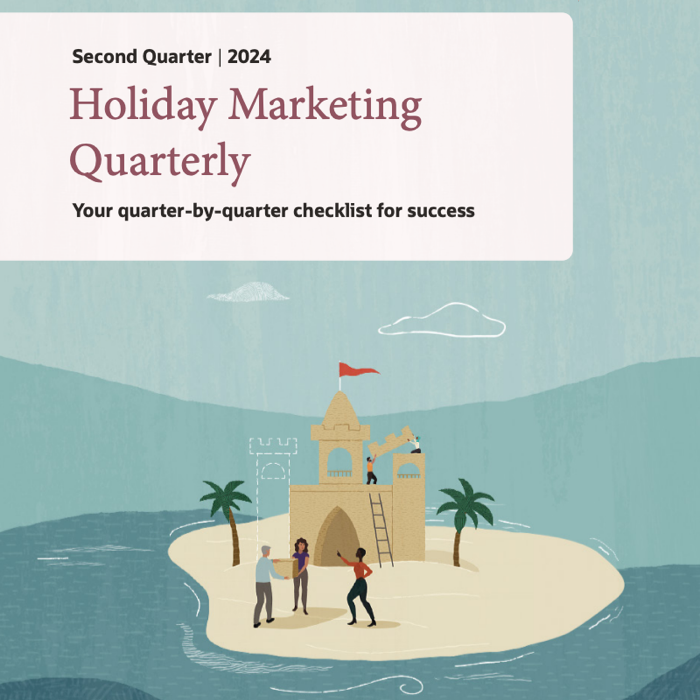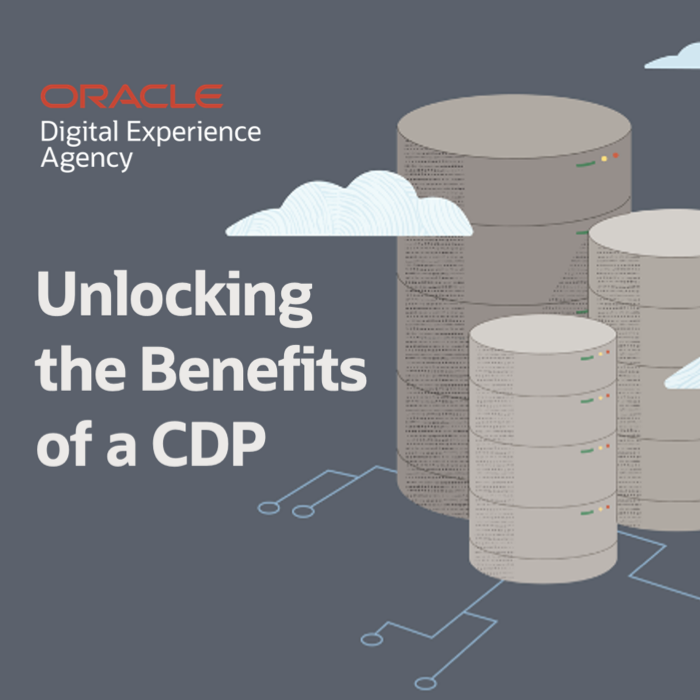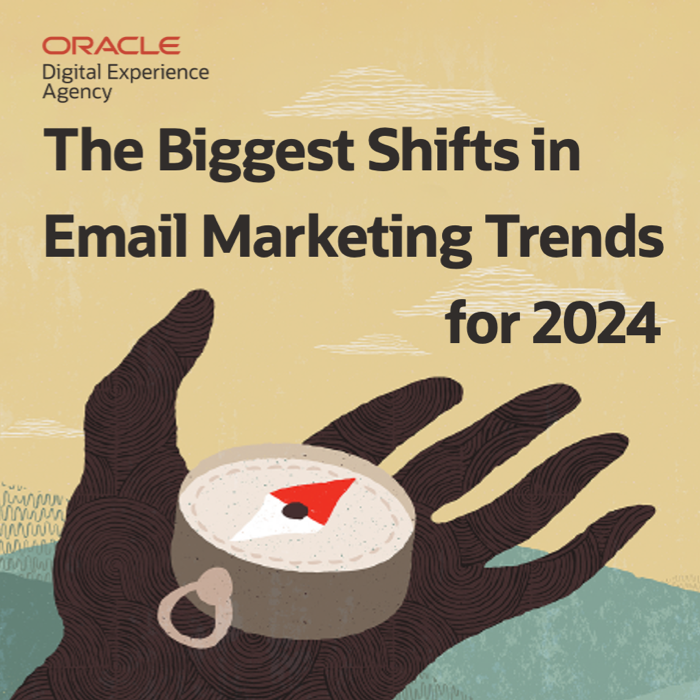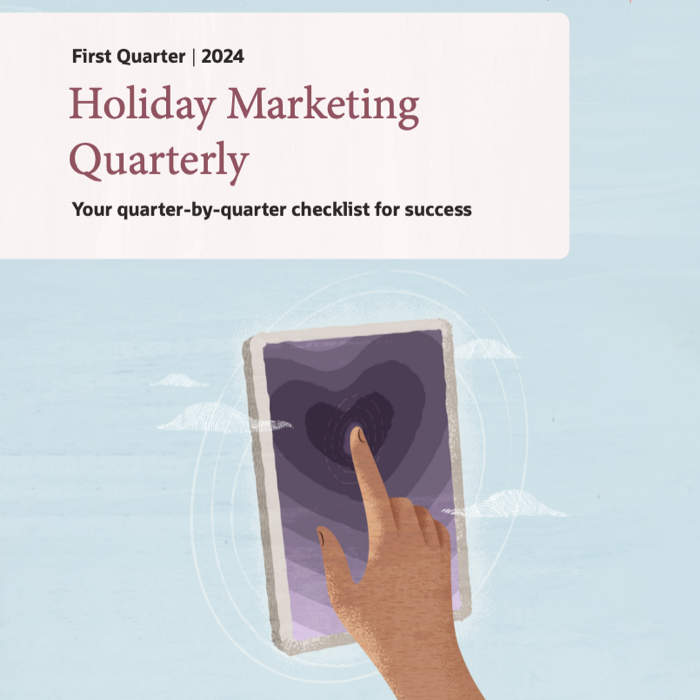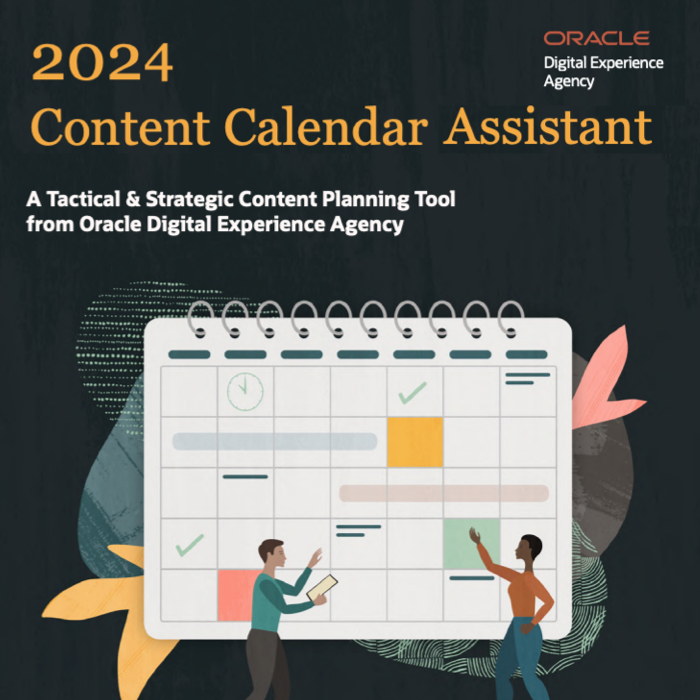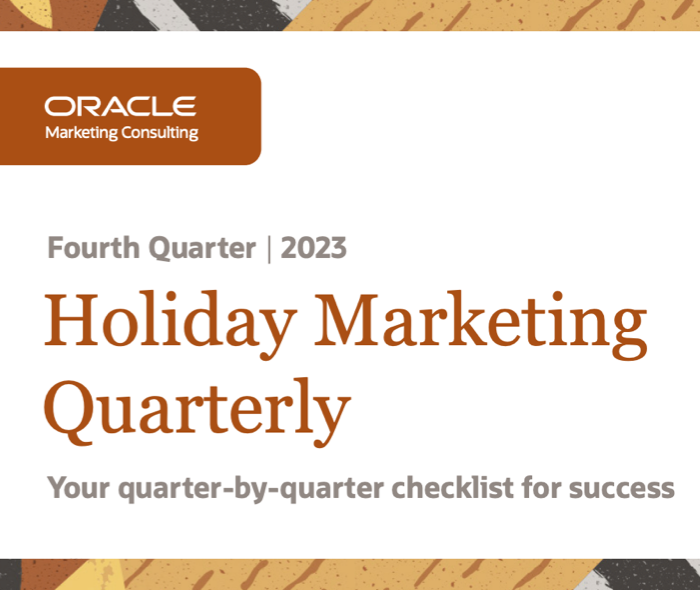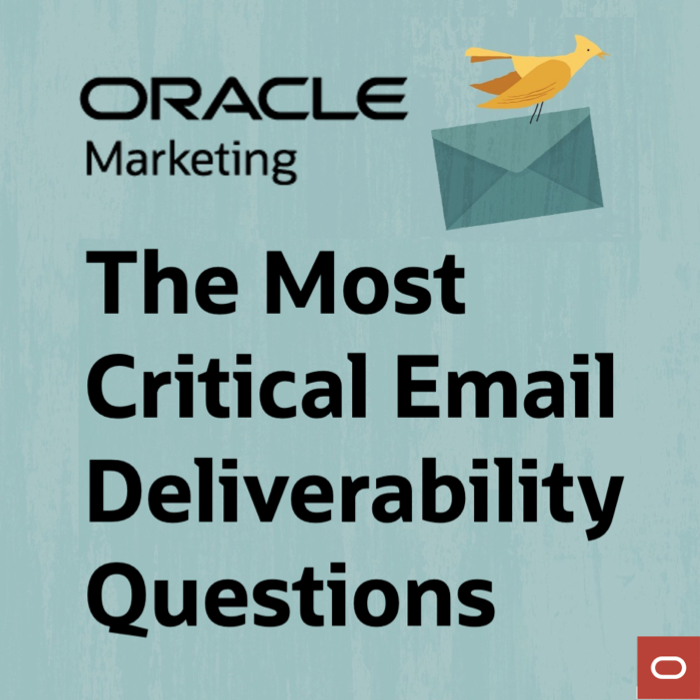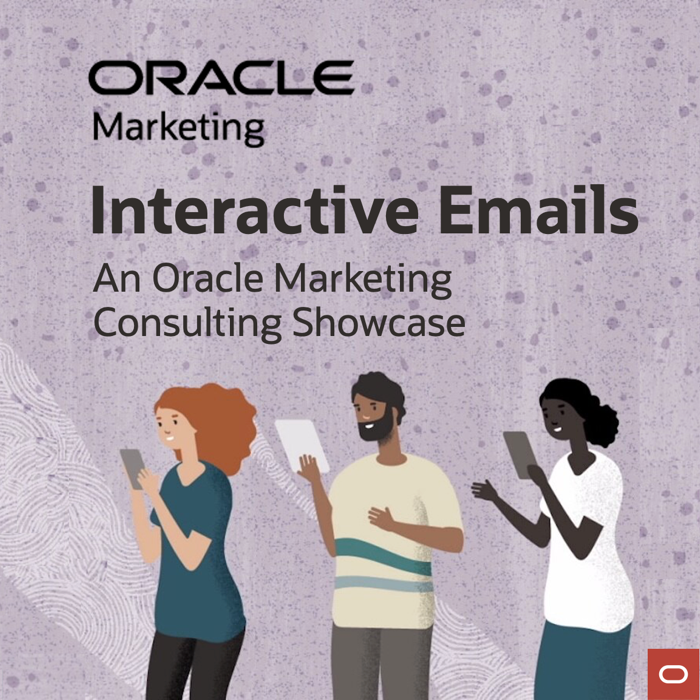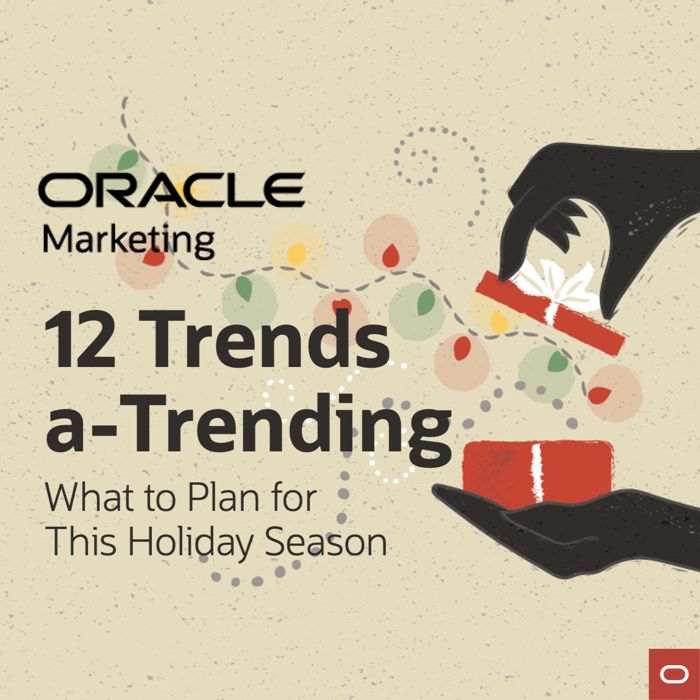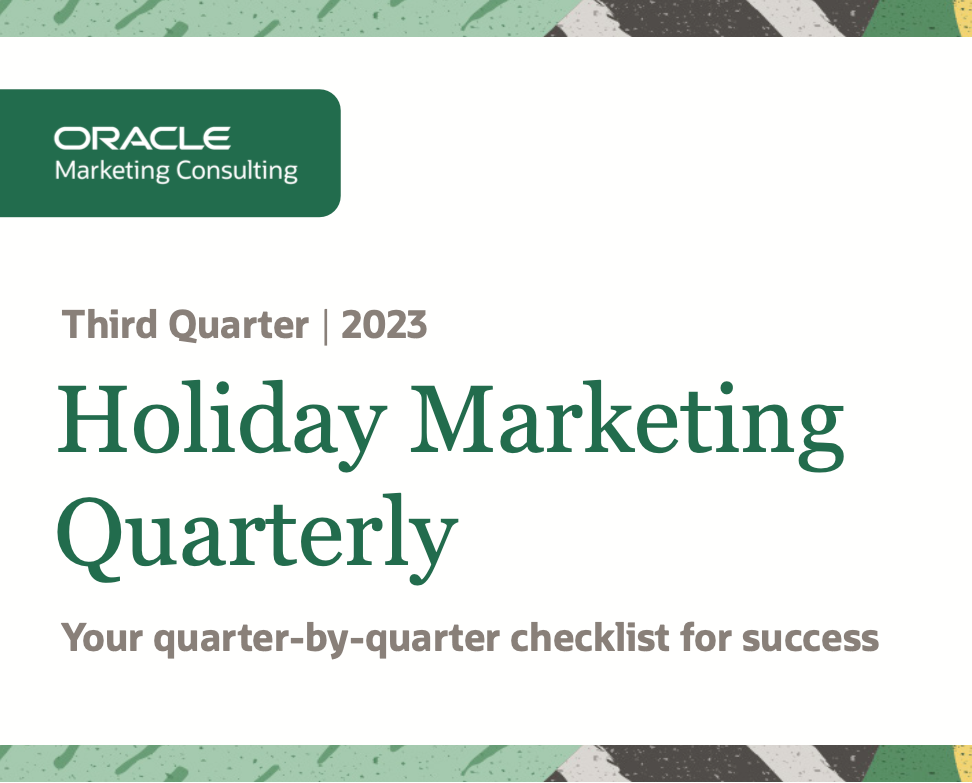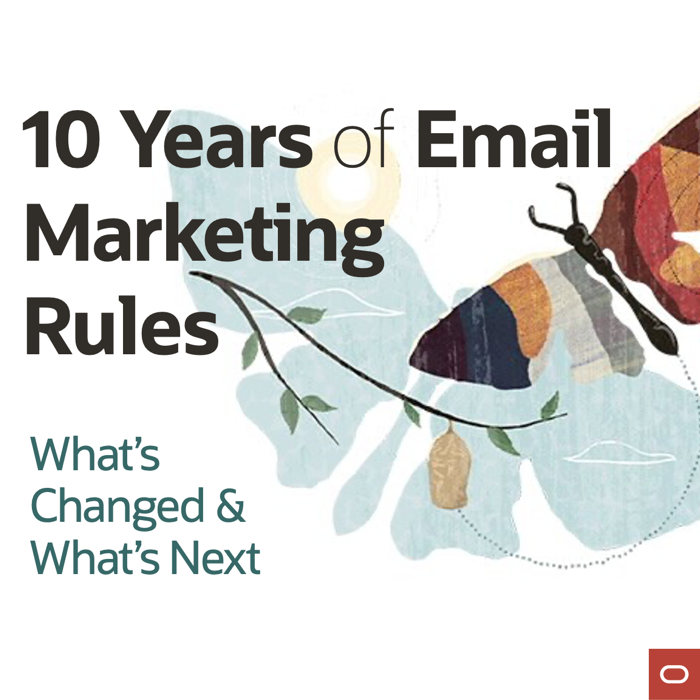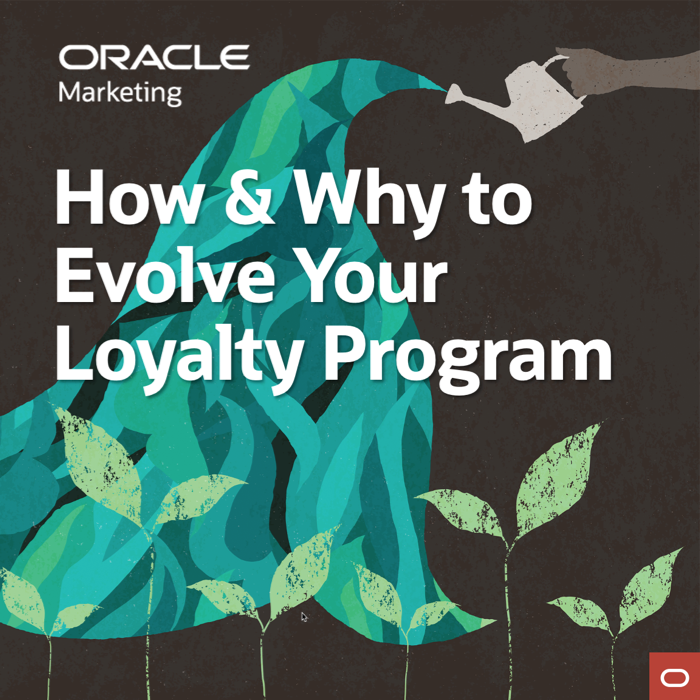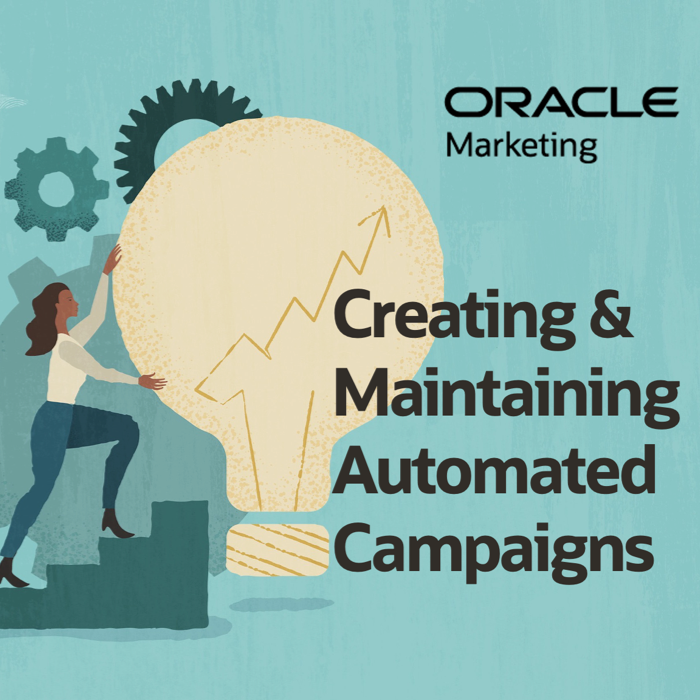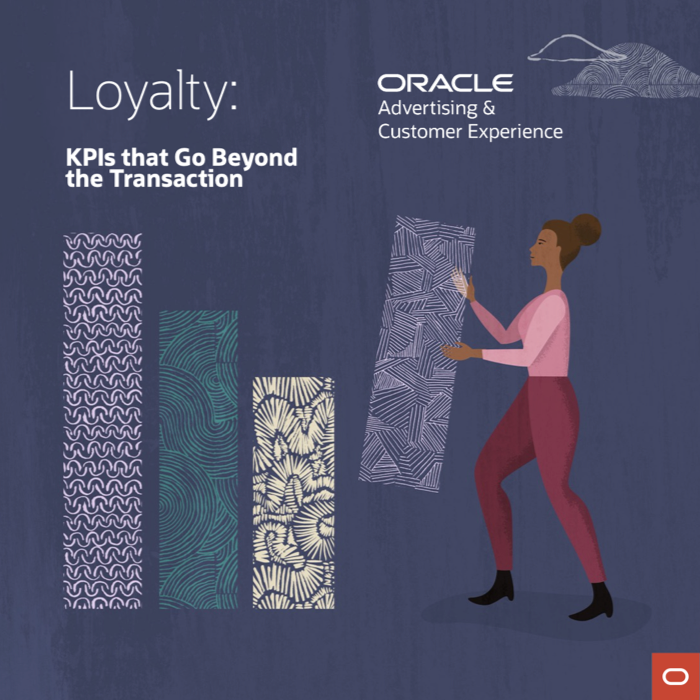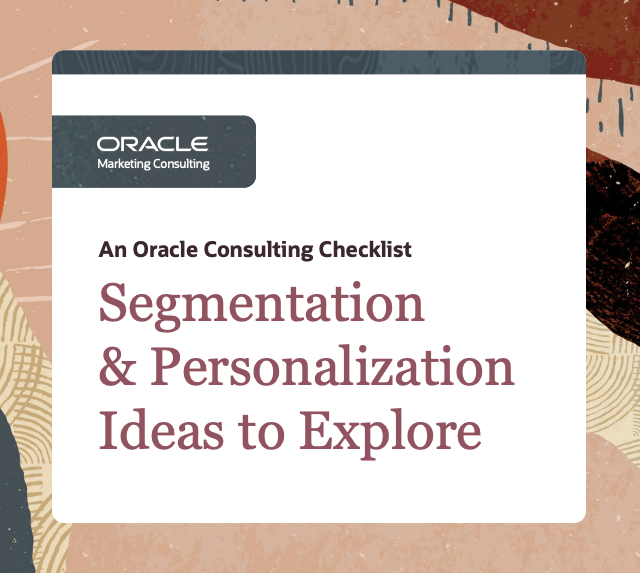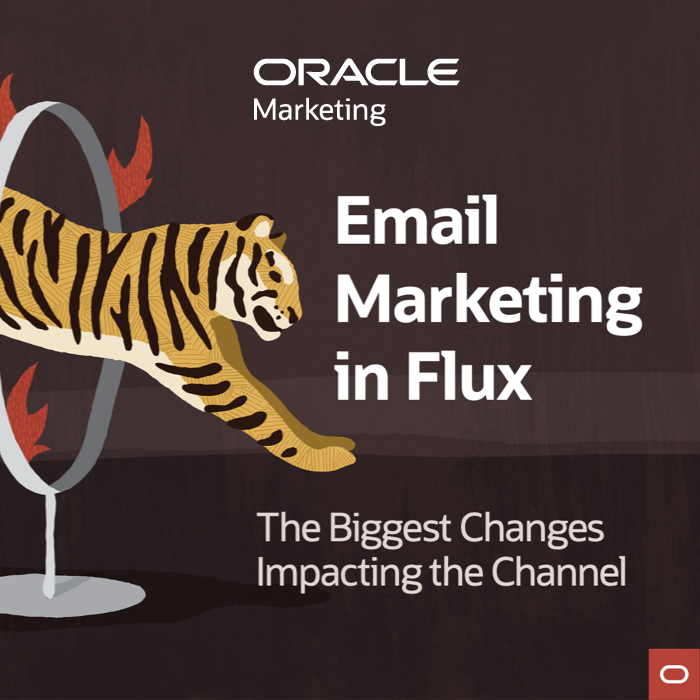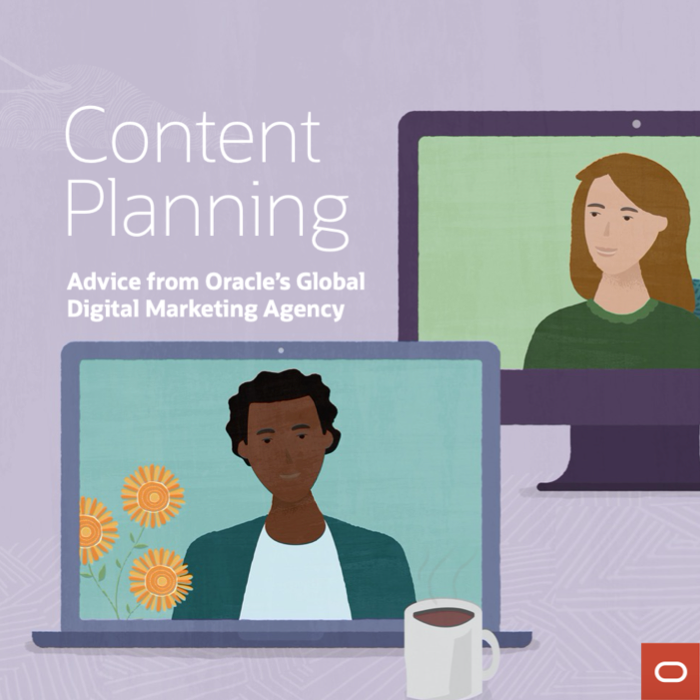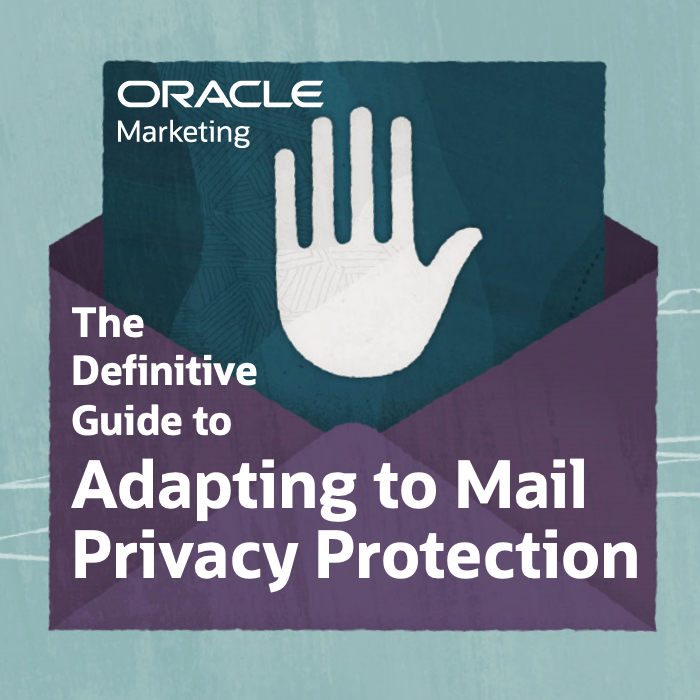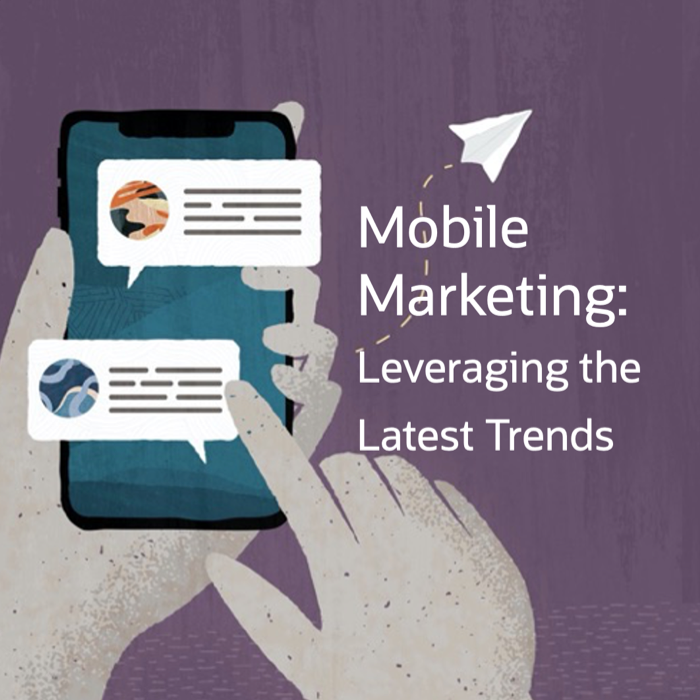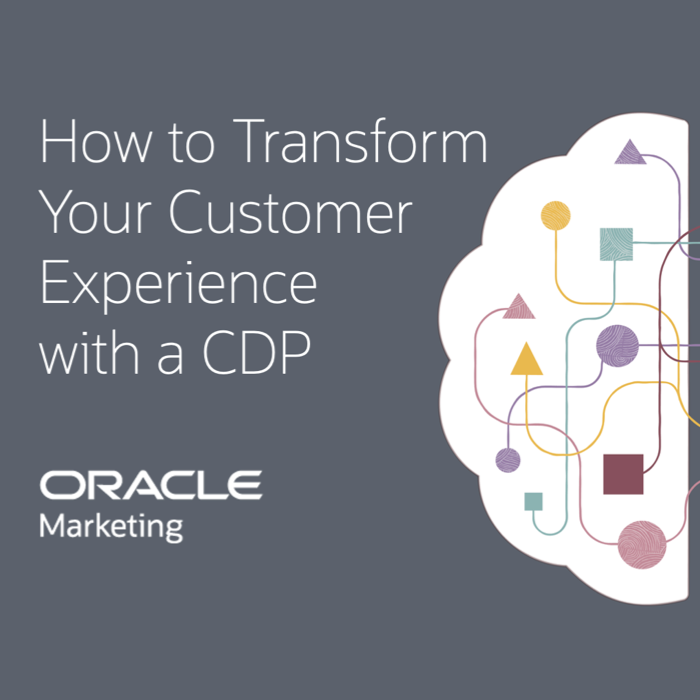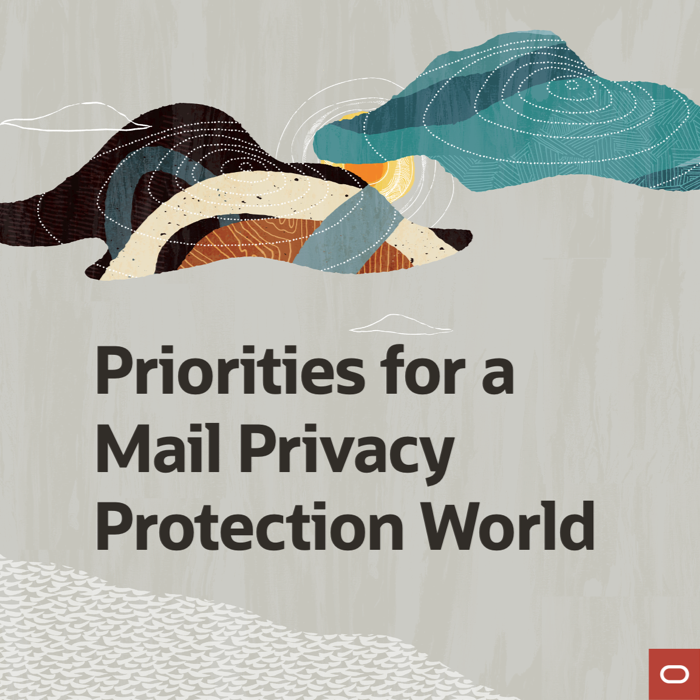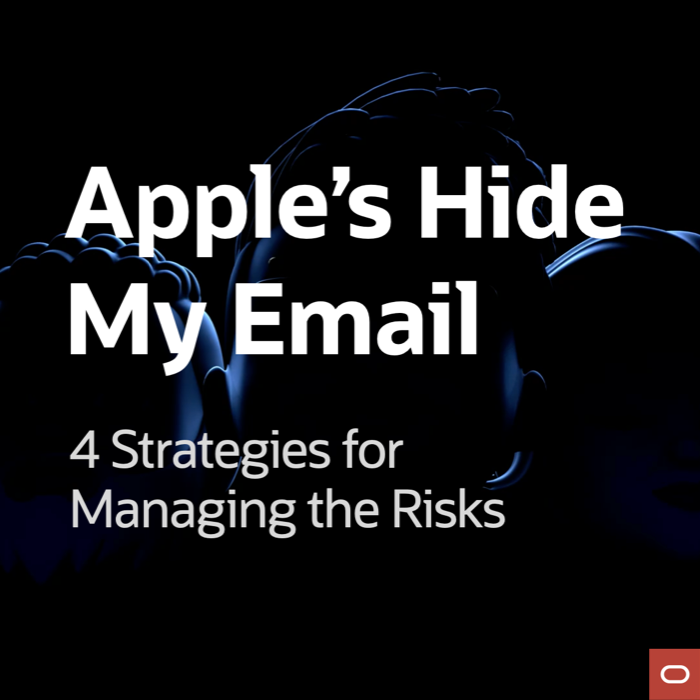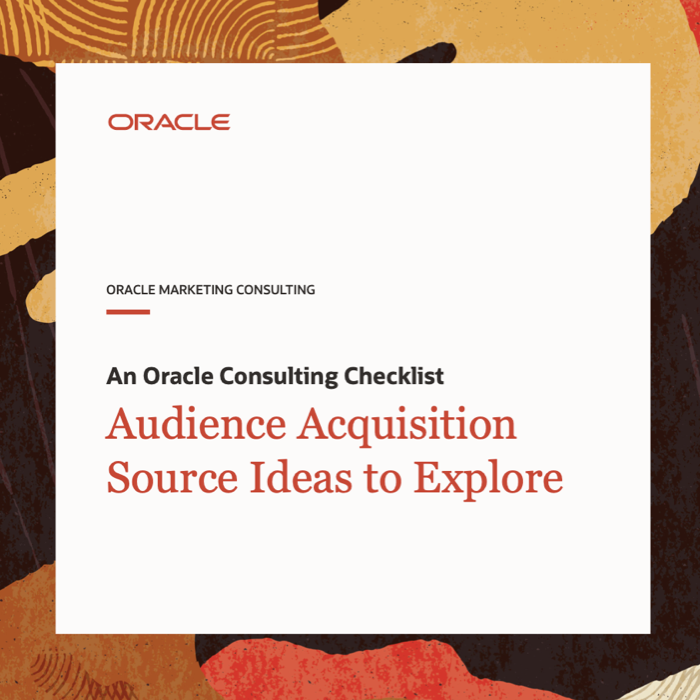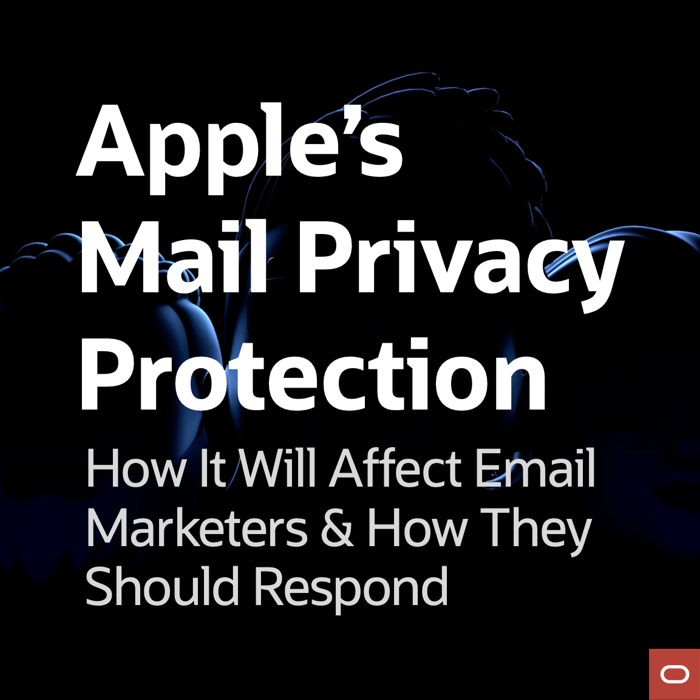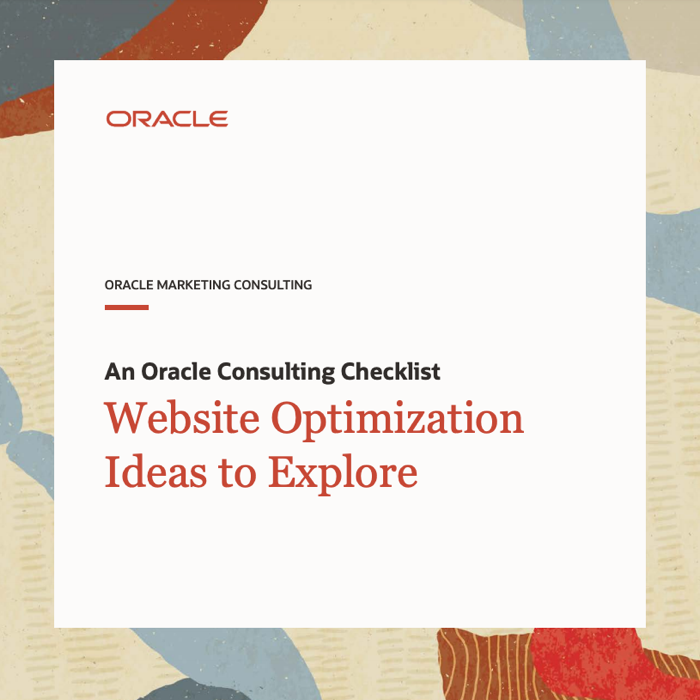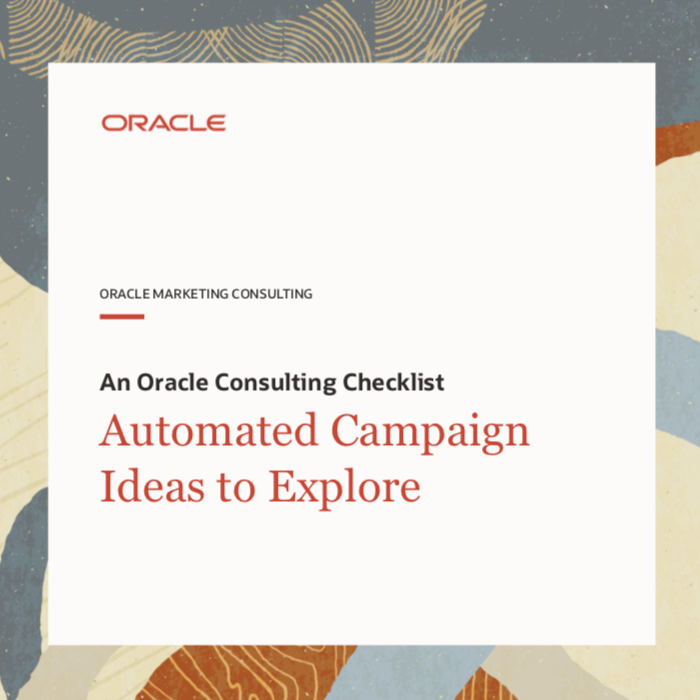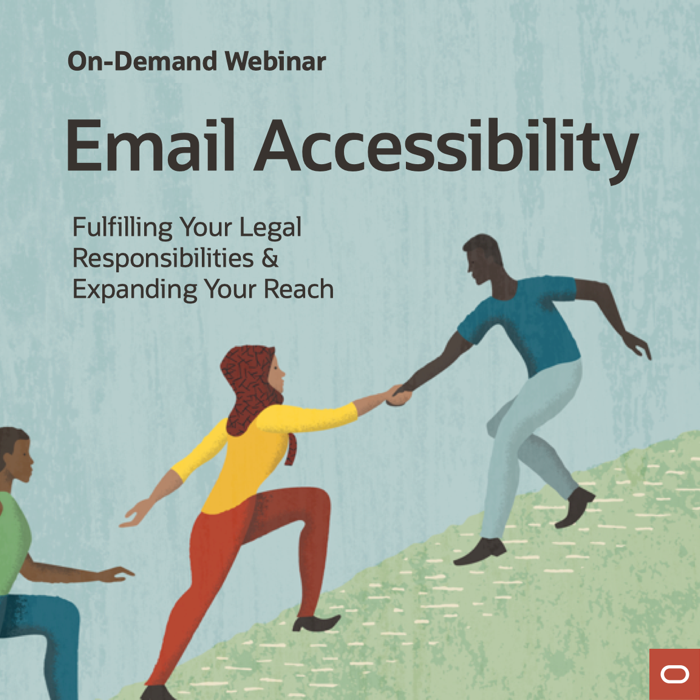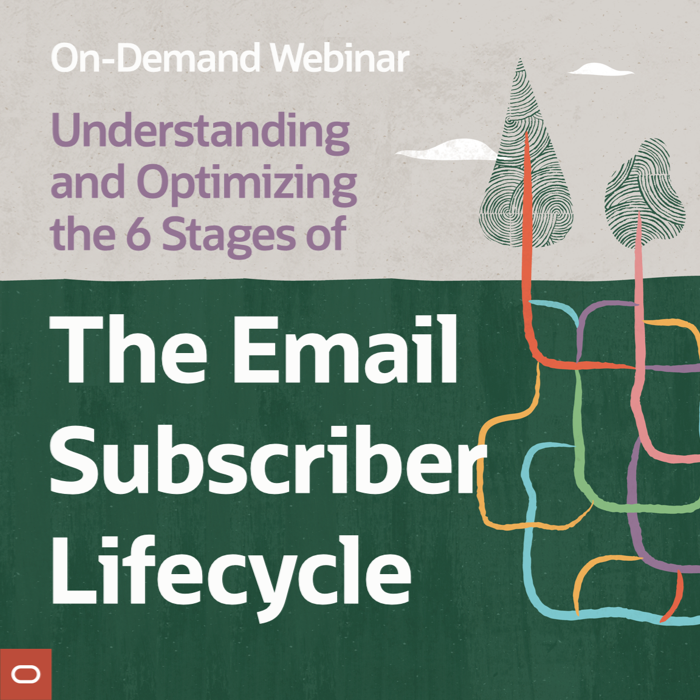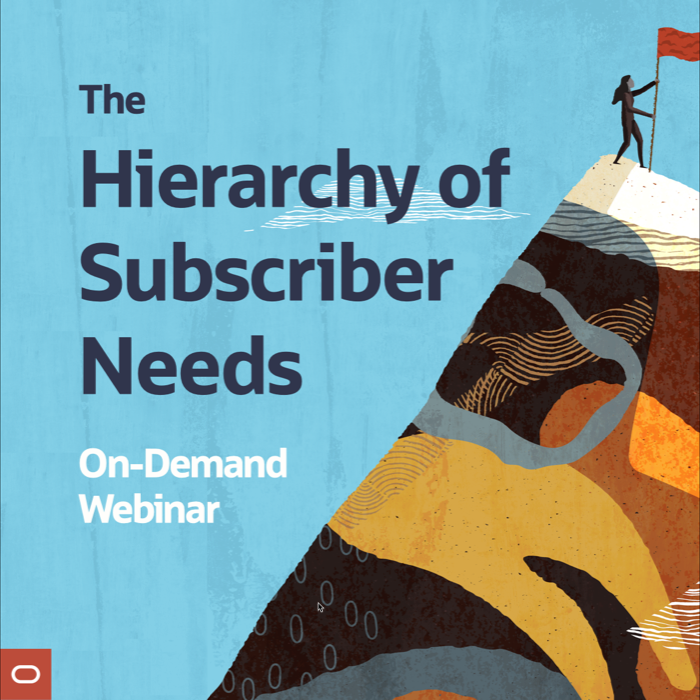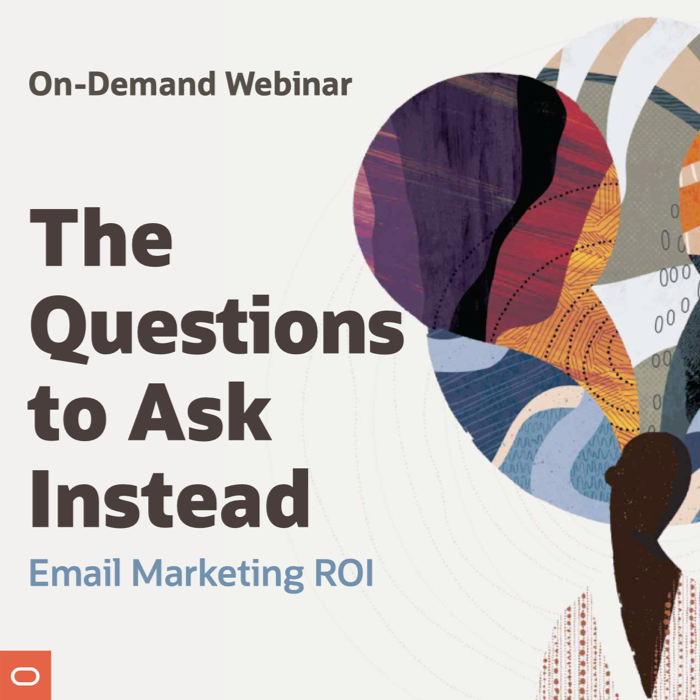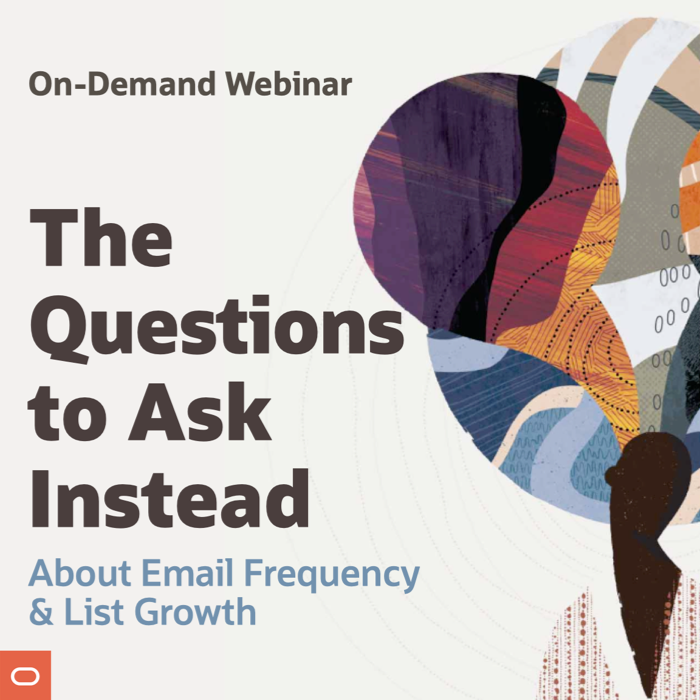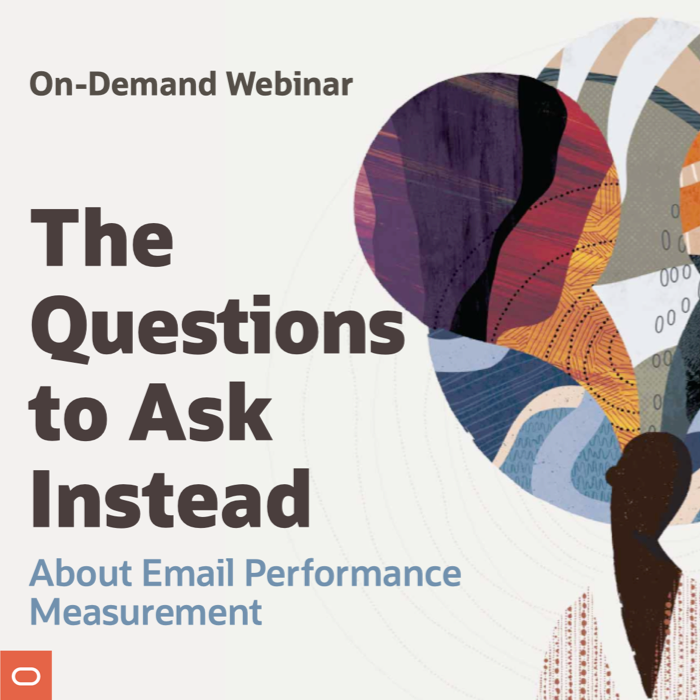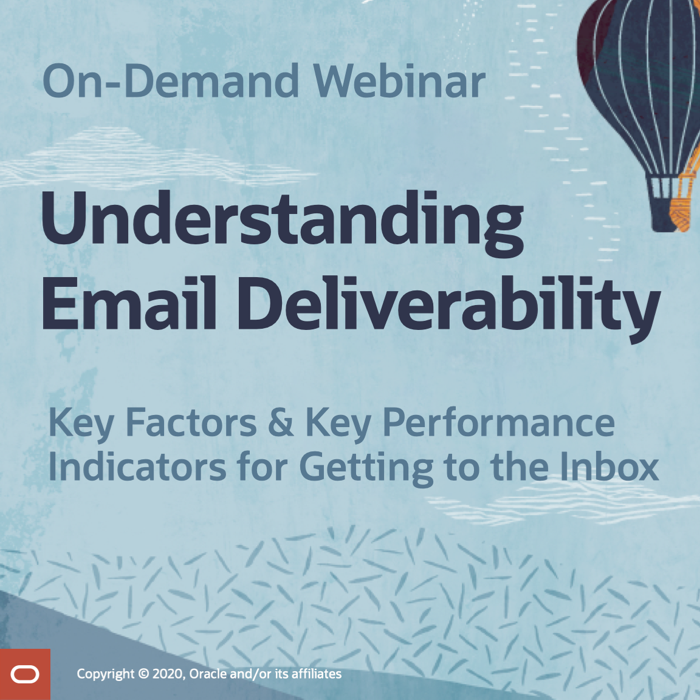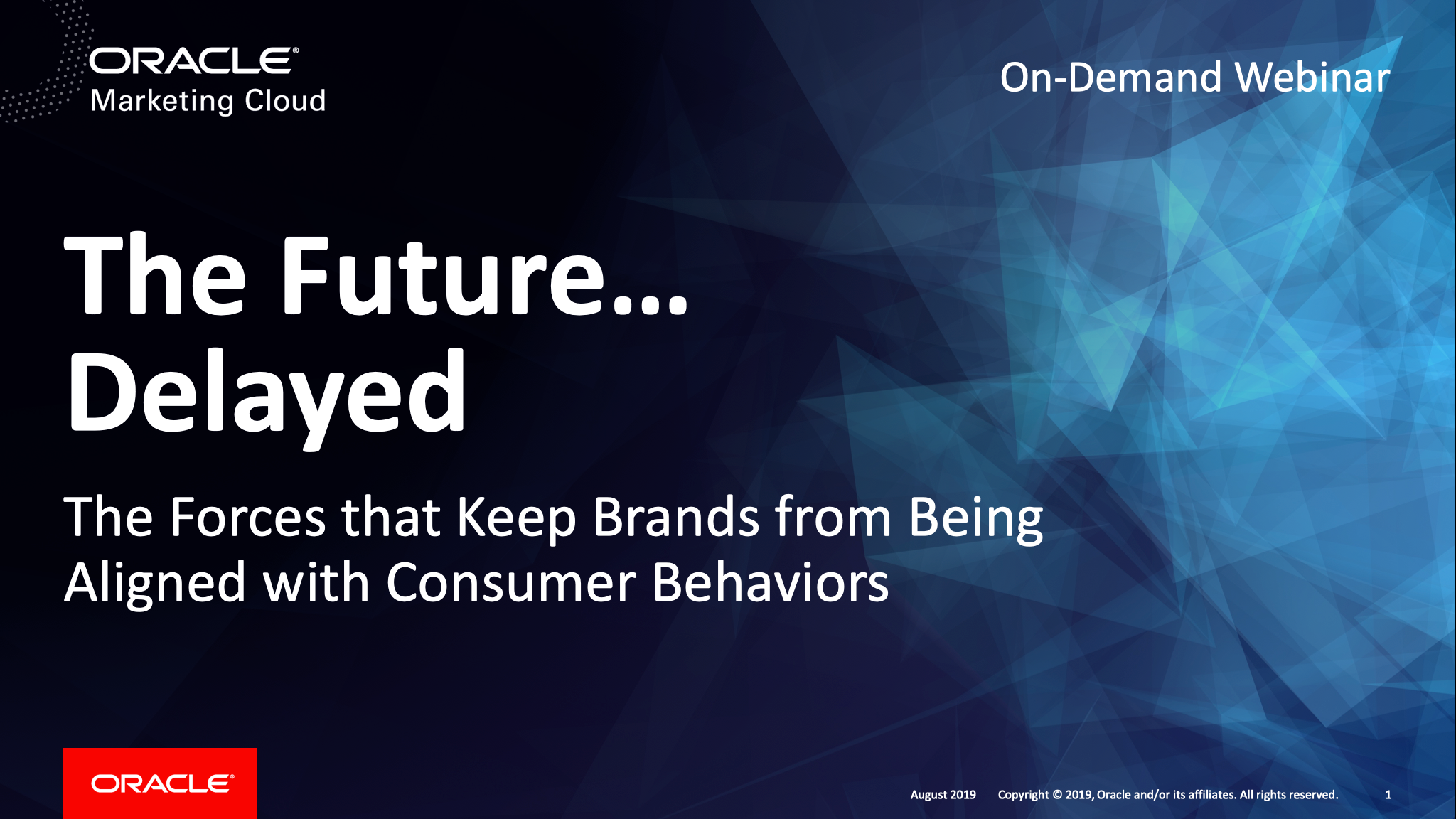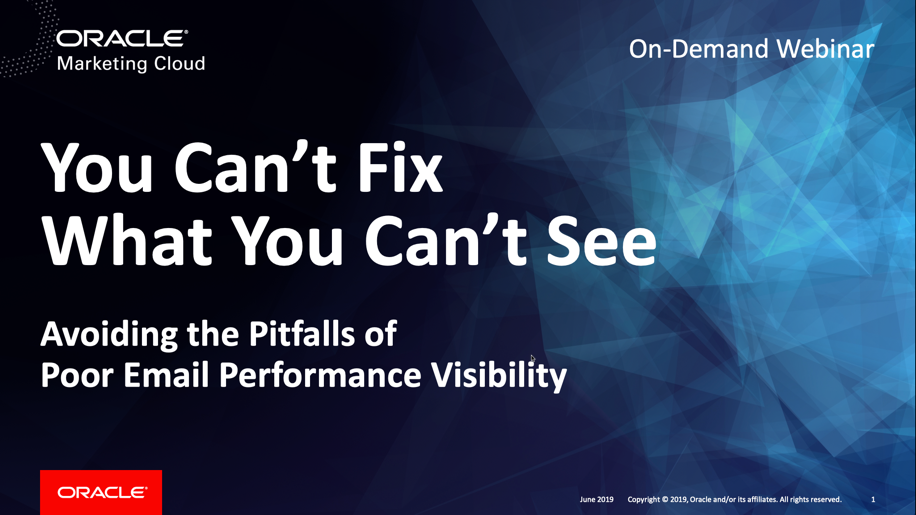Email Marketing Trends for 2023: Competitive Differentiators
Posted on February 28, 2023

Email marketing is constantly evolving, so it can be difficult to know where to invest your time and energy from year to year. It’s extra challenging in turbulent times like these, when the economic environment, consumer behaviors, and business goals are shifting rapidly.
To help you prioritize your email marketing efforts this year, we surveyed Oracle Marketing Consulting’s more than 500 digital marketing experts, asking them to rate the current adoption of a range of email marketing technologies and tactics, as well as their predicted impact during 2023. We then mapped the results into adoption-impact quadrants.
In this post, we’re looking at the Competitive Differentiators, which are in the low adoption–high impact quadrant. The technologies and tactics in this quadrant are not completely proven, but some companies are already seeing great results from using them. They offer a significant competitive advantage with considerably less risk than our Unproven Opportunities.
But, there are still risks, including the acquisition of smaller providers, frequent process and feature changes as the technology stabilizes, frequent changes in best practices as knowledge grows, changing cost structures, scarcity of needed skills, and other issues. These hassles and expenses are easier to accept, however, because many adopters are already seeing sizable returns on their investments. Their willingness to accept some uncertainty in exchange for good returns gives them a distinct advantage over their competitors, most of whom have yet to embrace these tactics and technologies.
Of the 26 trends we surveyed our digital marketing consultants about, eight of them were rated as being in the low adoption–high impact quadrant for 2023. Let’s talk about each of them in turn.
Posted by Chad S. White
5 Takeaways from Signing Up for Marketing Emails from 100 Brands
Posted on February 1, 2023

I recently signed up to receive promotional emails from 100 B2C brands that span the retail, travel, consumer products, and media industries. I noticed five major areas of opportunity for brands to improve their signup processes:
- Signup forms are often hard to find
- Too many brands ask for phone numbers
- Exactly what you’re signing up for is sometimes unclear or misleading
- Some confirmation and preference pages are dead ends
- Double opt-in confirmation is increasingly used
For a full discussion of each of those…
Posted by Chad S. White
On-Demand Webinar: How to Transform Your Customer Experience with a CDP
Posted on May 5, 2022
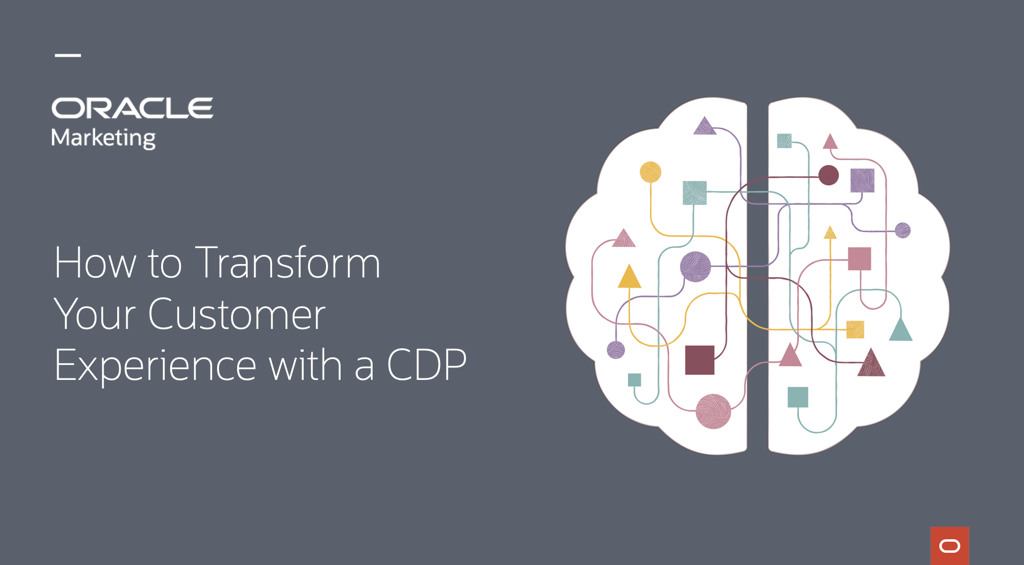
Brands are struggling with a myriad of forces, including disjointed omnichannel experiences, rapid consumer behavior changes, the sunsetting of third-party cookies, and Apple’s Mail Privacy Protection. Increasingly, they’re realizing that a big part of dealing with each of those challenges is to bring all their customer data together in one place—a customer data platform (CDP). However, the CDP landscape is confusing and many are not sure what the right choice is for them.
In this 49-minute on-demand webinar, Oracle Marketing Consulting’s Kaiti Gary, Patrick Maxwell, and I clear things up by:
- Discussing the pain points a CDP addresses
- Defining the four kinds of CDPs
- Explaining how to define your needs
- Sharing 7 use cases to help you assess your needs
Posted by Chad S. White
Second Quarter 2022 Holiday Marketing Quarterly
Posted on April 8, 2022
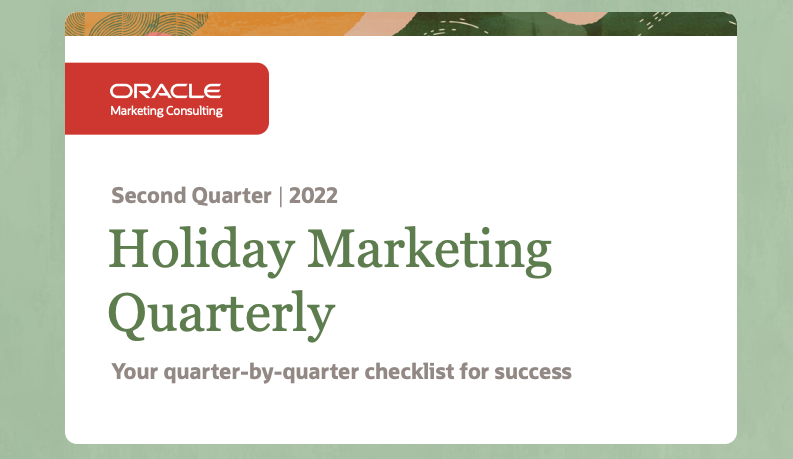
The holiday season doesn’t have an off-season. Having a successful holiday season means executing a successful year-round strategy. Oracle’s Holiday Marketing Quarterly gives B2C brands a quarter-by-quarter plan for how to achieve more during the critical holiday season with their email marketing and other digital marketing channels.
Our second quarter checklist is focused on finishing your review of the 2021 holiday season and then making a range of improvements to everything from subscriber acquisition to performance reporting to campaign production. In this Holiday Marketing Quarterly, we’ll cover:
- Holiday Messaging Competitive Intelligence
- Subscriber Acquisition Source Optimization
- Unsubscribe Process Optimization
- Improving Analytics & Reporting
- Experimentation & Testing
- Accelerating Campaign Build Processes
For the full checklist…
Posted by Chad S. White
5 Ways to Generate More Loyalty & Email Signups
Posted on March 24, 2022
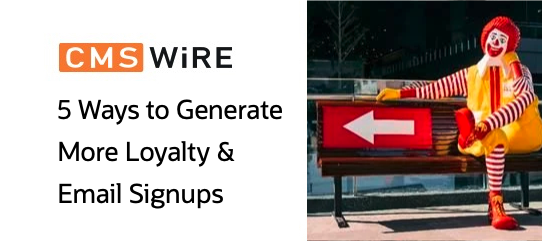
The sunsetting of third-party cookies is putting added pressure on marketers to grow their email subscriber and loyalty member audiences. In addition to needing to collect more email addresses as identifiers, they need the zero- and first-party data these programs generate to improve targeting and personalization across all their advertising and marketing efforts.
Here are five ways to boost your loyalty and email signups:
- Sell the benefits of signing up
- Make your signup forms simpler
- Make your signup forms more user-friendly
- Make your signup forms more prominent
- Use many subscriber acquisition sources
For more details on each of those…
Posted by Chad S. White
Inboxing Podcast: Special Guest Chad White
Posted on March 21, 2022
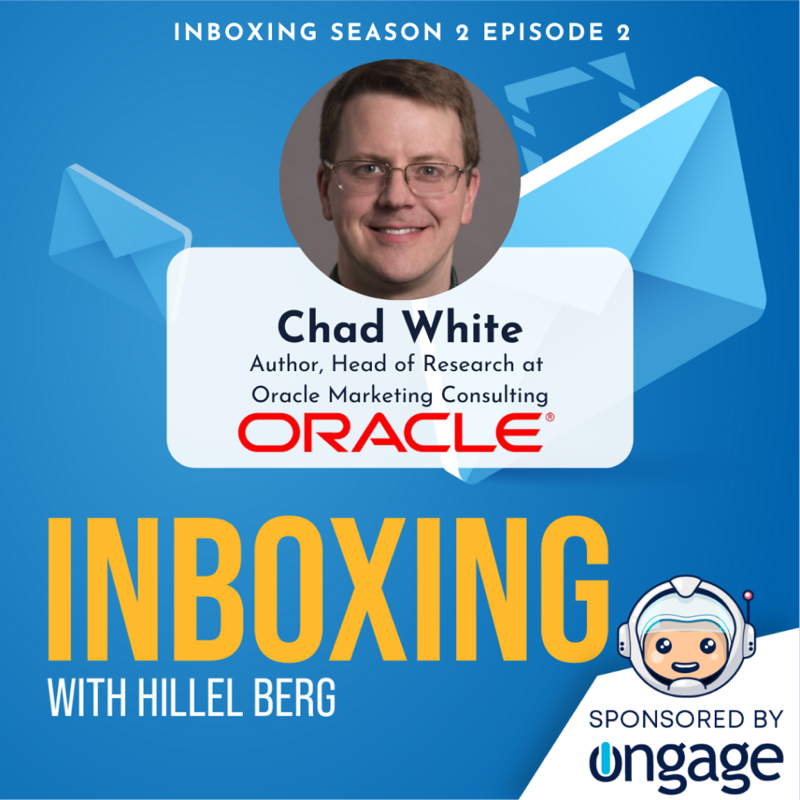
I join host Hillel Berg for the second season of the Inboxing Podcast. During the hour-long conversation, we talk about:
- Mobile-friendliness
- Inclusive design and email accessibility
- Email marketing’s unique advantages
- The need to continue desiloing the email marketing channel
- List building
- Why I wrote “Email Marketing Rules”
- My top 5 email marketing tips for 2022
- And much more
Posted by Chad S. White
Hide My Email Elevates Risks of Temporary Email Addresses
Posted on September 24, 2021

Email marketing is a great way to build long-term relationships, but marketers have always wrestled with accepting low-value email addresses from would-be subscribers. B2C brands wonder if a subscriber has provided their primary email account or a secondary address they check far less frequently. And B2B marketers debate accepting freemail addresses or only corporate email addresses, which make lead scoring easier. While businesses can make a “something is better than nothing” argument for accepting secondary email addresses and freemail addresses, it’s harder to say the same when it comes to disposable or temporary email addresses.
That’s because you can’t build a relationship with someone who uses an email address that’s typically designed to expire within hours. Beyond cluttering up your CRM database with dead end contact data (the biggest risk), there’s also a small risk your sender reputation will be impacted since any email sent to a disposable email address after it expires hard bounces. When accepting a temporary email address, you’re banking entirely on the value of being able to deliver what’s generally a one-time transactional email, signup incentive, or content download to that person.
The impact of temporary email addresses is now more pressing because of newly released updates to Hide My Email, a privacy feature Apple is promoting alongside Mail Privacy Protection.
Posted by Chad S. White
Email Marketing’s Increasing Role as Third-Party Cookies Disappear
Posted on September 1, 2021
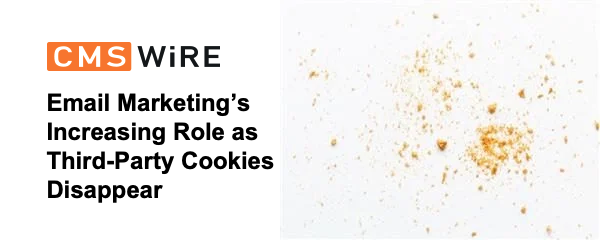
While some think that Google giving marketers two more years to prepare for the depreciation of third-party cookies will lead to complacency, I hope that brands maintain the momentum of recent months. Without a doubt, this change across the entire online advertising industry is causing a major shift in digital advertising targeting and identity management. Every marketer would be wise to use this extra time to collect alternative IDs and more zero- and first-party data assets so they can continue to create effective ad campaigns. Email marketing will have a role to play in addressing both of those needs.
Let’s look at five ways that email marketing’s role will grow as priorities shift to cope with the sunsetting of third-party cookies…
Posted by Chad S. White
Only Influencers’ Email Metrics Project: Ask the Right Email Questions
Posted on August 26, 2021
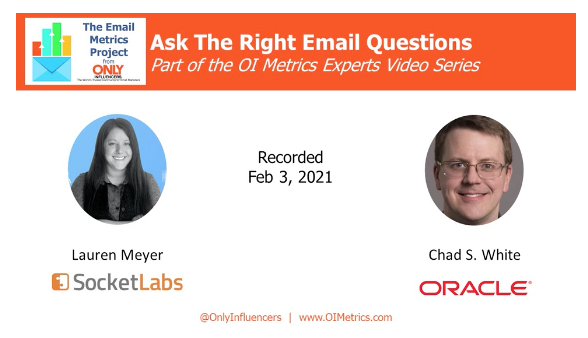
Email metrics are confusing and can be easily misunderstood and misused. To help marketers avoid mistakes, Only Influencers has launched The Email Metrics Project at oimetrics.com. This website is home to definitions, articles, and videos to educate marketers on how to calculate and appropriately use email marketing metrics.
I’m honored to have contributed several of my articles about email metrics, as well as recorded a video with Lauren Meyer about how marketers need to Ask The Right Email Questions when using email metrics. In that 26-minute video, we talk about:
- Common questions that email marketers ask that can lead to the wrong tactics and strategies
- The differences between business metrics and email metrics, and the differences between campaign, channels, and customer metrics
- How having a super-high ROI means you’re leaving tons of money on the table
- What marketers really want are insights, not data
- Why open rates are the most misunderstood email metric
- The usefulness of external benchmarks
- How to use internal benchmarks effectively
- And much more
>> Watch this 26-minute video on oimetrics.com
And for a much deeper dive into asking the right email questions, watch…
The Questions to Ask Instead: Email Performance Measurement
The Questions to Ask Instead: Email Frequency & List Building
Posted by Chad S. White
Audience Acquisition Source Ideas to Explore: An Oracle Consulting Checklist
Posted on August 18, 2021
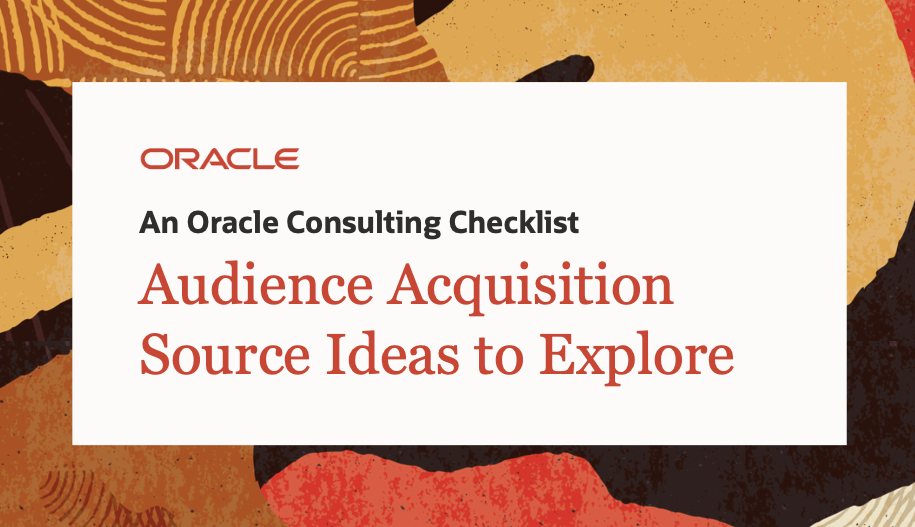
Checklists can inspire you, help you identify gaps, allow you to take inventory, and provide an easy-to-follow action plan. At Oracle Marketing Consulting, we use checklists all the time with our clients. In fact, we love them so much that we wanted to share some of our most useful checklists, including this one about audience acquisition source ideas.
Whether you’re building your audience in email, SMS, mobile push, web push, direct mail, or another channel, where you attract those subscribers or followers from can have a profound impact on your performance. While more acquisition sources generally equals faster audience growth, not all audience growth is created equal. Some acquisition sources will generate healthy engagement and revenue increases for you, while others may generate little—or, worse, waste time and money, while also harming your deliverability, reputation, or brand image.
On the pages that follow, we list major audience acquisition sources. In addition to having our digital marketing consultants share advice about optimizing each of these acquisition sources, we also organize them into three groups to help you better understand the risk profile of the sources you’re using:
- Low-risk sources, where you’re recruiting subscribers or followers during or after transactions in owned channels who are very familiar with your brand
- Medium-risk sources, where you’re recruiting subscribers or followers before transactions in owned or leased channels who are generally somewhat familiar with your brand
- High-risk sources, where you’re recruiting subscribers or followers in paid channels who are generally unfamiliar with your brand, or where you’re using handwritten or verbal data collection methods
We hope this checklist helps you inventory the audience acquisition sources you already have, understand the risk profile of those sources, make improvements, and explore other promising sources.
Posted by Chad S. White

Welcome! Email Marketing Rules is your guide to understanding the best practices of this complex, often misunderstood channel as you craft the best executions for your brand. Every week, we’ll explore strategies and tactics, discuss tips and inspiration, and dig into industry news and trends.
Chad S. White
Head of Research
Oracle Digital Experience Agency
Author of Email Marketing Rules and nearly 4,000 articles about digital and email marketing
Topics
Recent Posts
Archives
- May 2024 (1)
- April 2024 (6)
- March 2024 (9)
- February 2024 (10)
- January 2024 (7)
- December 2023 (7)
- November 2023 (6)
- October 2023 (10)
- September 2023 (7)
- August 2023 (9)
- July 2023 (7)
- June 2023 (8)
- May 2023 (8)
- April 2023 (9)
- March 2023 (9)
- February 2023 (6)
- January 2023 (10)
- December 2022 (5)
- November 2022 (7)
- October 2022 (10)
- September 2022 (9)
- August 2022 (6)
- July 2022 (5)
- June 2022 (8)
- May 2022 (7)
- April 2022 (4)
- March 2022 (9)
- February 2022 (7)
- January 2022 (7)
- December 2021 (5)
- November 2021 (7)
- October 2021 (9)
- September 2021 (7)
- August 2021 (9)
- July 2021 (6)
- June 2021 (8)
- May 2021 (6)
- April 2021 (3)
- March 2021 (6)
- February 2021 (6)
- January 2021 (9)
- December 2020 (8)
- November 2020 (6)
- October 2020 (10)
- September 2020 (9)
- August 2020 (8)
- July 2020 (10)
- June 2020 (12)
- May 2020 (6)
- April 2020 (5)
- March 2020 (8)
- February 2020 (6)
- January 2020 (7)
- December 2019 (6)
- November 2019 (6)
- October 2019 (8)
- September 2019 (3)
- August 2019 (5)
- July 2019 (6)
- June 2019 (3)
- May 2019 (7)
- April 2019 (2)
- March 2019 (4)
- February 2019 (3)
- January 2019 (5)
- December 2018 (9)
- November 2018 (7)
- October 2018 (11)
- September 2018 (7)
- August 2018 (9)
- July 2018 (7)
- June 2018 (5)
- May 2018 (5)
- April 2018 (7)
- March 2018 (8)
- February 2018 (3)
- January 2018 (6)
- December 2017 (8)
- November 2017 (8)
- October 2017 (4)
- September 2017 (6)
- August 2017 (5)
- July 2017 (11)
- June 2017 (9)
- May 2017 (8)
- April 2017 (5)
- March 2017 (5)
- February 2017 (3)
- January 2017 (5)
- December 2016 (11)
- November 2016 (6)
- October 2016 (5)
- September 2016 (10)
- August 2016 (10)
- July 2016 (6)
- June 2016 (6)
- May 2016 (8)
- April 2016 (7)
- March 2016 (9)
- February 2016 (8)
- January 2016 (8)
- December 2015 (7)
- November 2015 (8)
- October 2015 (7)
- September 2015 (8)
- August 2015 (4)
- July 2015 (8)
- June 2015 (4)
- May 2015 (6)
- April 2015 (8)
- March 2015 (6)
- February 2015 (9)
- January 2015 (7)
- December 2014 (13)
- November 2014 (7)
- October 2014 (9)
- September 2014 (11)
- August 2014 (13)
- July 2014 (9)
- June 2014 (6)
- May 2014 (8)
- April 2014 (6)
- March 2014 (11)
- February 2014 (7)
- January 2014 (8)
- December 2013 (10)
- November 2013 (8)
- October 2013 (11)
- September 2013 (10)
- August 2013 (12)
- July 2013 (9)
- June 2013 (10)
- May 2013 (12)
- April 2013 (7)
- March 2013 (9)
- February 2013 (5)
 Email Marketing Rules
Email Marketing Rules

